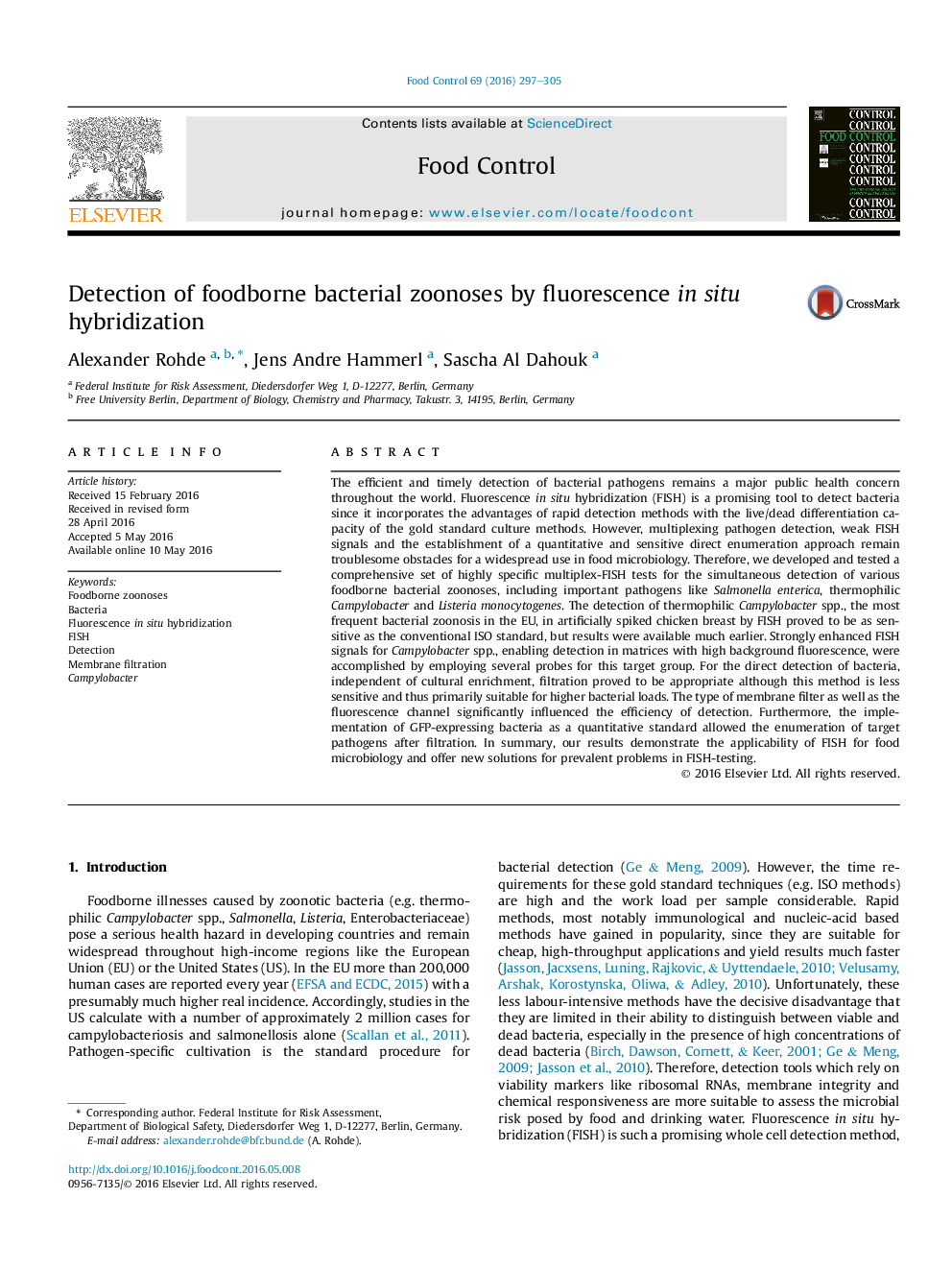| کد مقاله | کد نشریه | سال انتشار | مقاله انگلیسی | نسخه تمام متن |
|---|---|---|---|---|
| 6390069 | 1628393 | 2016 | 9 صفحه PDF | دانلود رایگان |
عنوان انگلیسی مقاله ISI
Detection of foodborne bacterial zoonoses by fluorescence in situ hybridization
ترجمه فارسی عنوان
تشخیص زونوزهای باکتریایی غذا توسط هیبریداسیون فلورسانس در محل
دانلود مقاله + سفارش ترجمه
دانلود مقاله ISI انگلیسی
رایگان برای ایرانیان
کلمات کلیدی
موضوعات مرتبط
علوم زیستی و بیوفناوری
علوم کشاورزی و بیولوژیک
دانش تغذیه
چکیده انگلیسی
The efficient and timely detection of bacterial pathogens remains a major public health concern throughout the world. Fluorescence in situ hybridization (FISH) is a promising tool to detect bacteria since it incorporates the advantages of rapid detection methods with the live/dead differentiation capacity of the gold standard culture methods. However, multiplexing pathogen detection, weak FISH signals and the establishment of a quantitative and sensitive direct enumeration approach remain troublesome obstacles for a widespread use in food microbiology. Therefore, we developed and tested a comprehensive set of highly specific multiplex-FISH tests for the simultaneous detection of various foodborne bacterial zoonoses, including important pathogens like Salmonella enterica, thermophilic Campylobacter and Listeria monocytogenes. The detection of thermophilic Campylobacter spp., the most frequent bacterial zoonosis in the EU, in artificially spiked chicken breast by FISH proved to be as sensitive as the conventional ISO standard, but results were available much earlier. Strongly enhanced FISH signals for Campylobacter spp., enabling detection in matrices with high background fluorescence, were accomplished by employing several probes for this target group. For the direct detection of bacteria, independent of cultural enrichment, filtration proved to be appropriate although this method is less sensitive and thus primarily suitable for higher bacterial loads. The type of membrane filter as well as the fluorescence channel significantly influenced the efficiency of detection. Furthermore, the implementation of GFP-expressing bacteria as a quantitative standard allowed the enumeration of target pathogens after filtration. In summary, our results demonstrate the applicability of FISH for food microbiology and offer new solutions for prevalent problems in FISH-testing.
ناشر
Database: Elsevier - ScienceDirect (ساینس دایرکت)
Journal: Food Control - Volume 69, November 2016, Pages 297-305
Journal: Food Control - Volume 69, November 2016, Pages 297-305
نویسندگان
Alexander Rohde, Jens Andre Hammerl, Sascha Al Dahouk,
